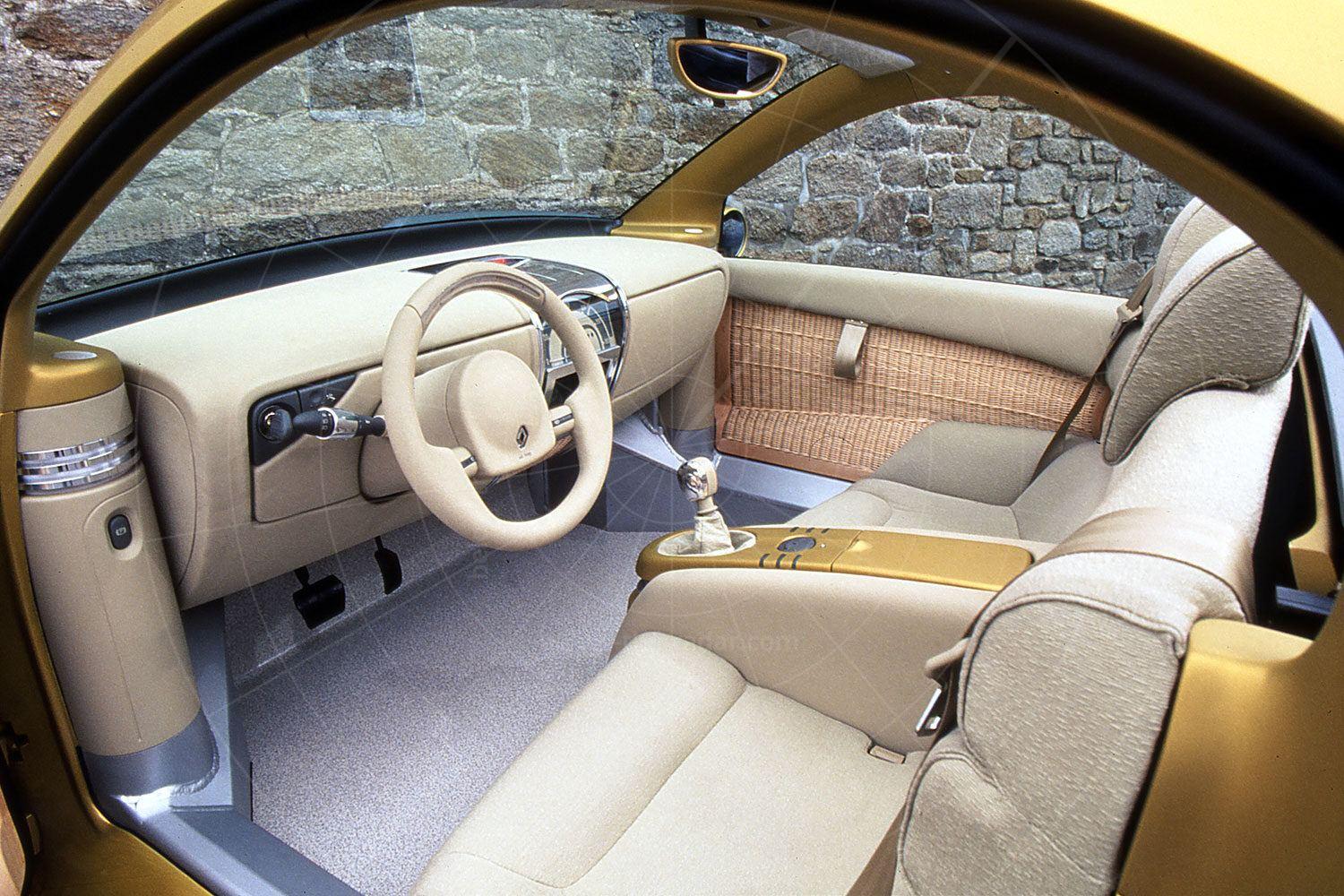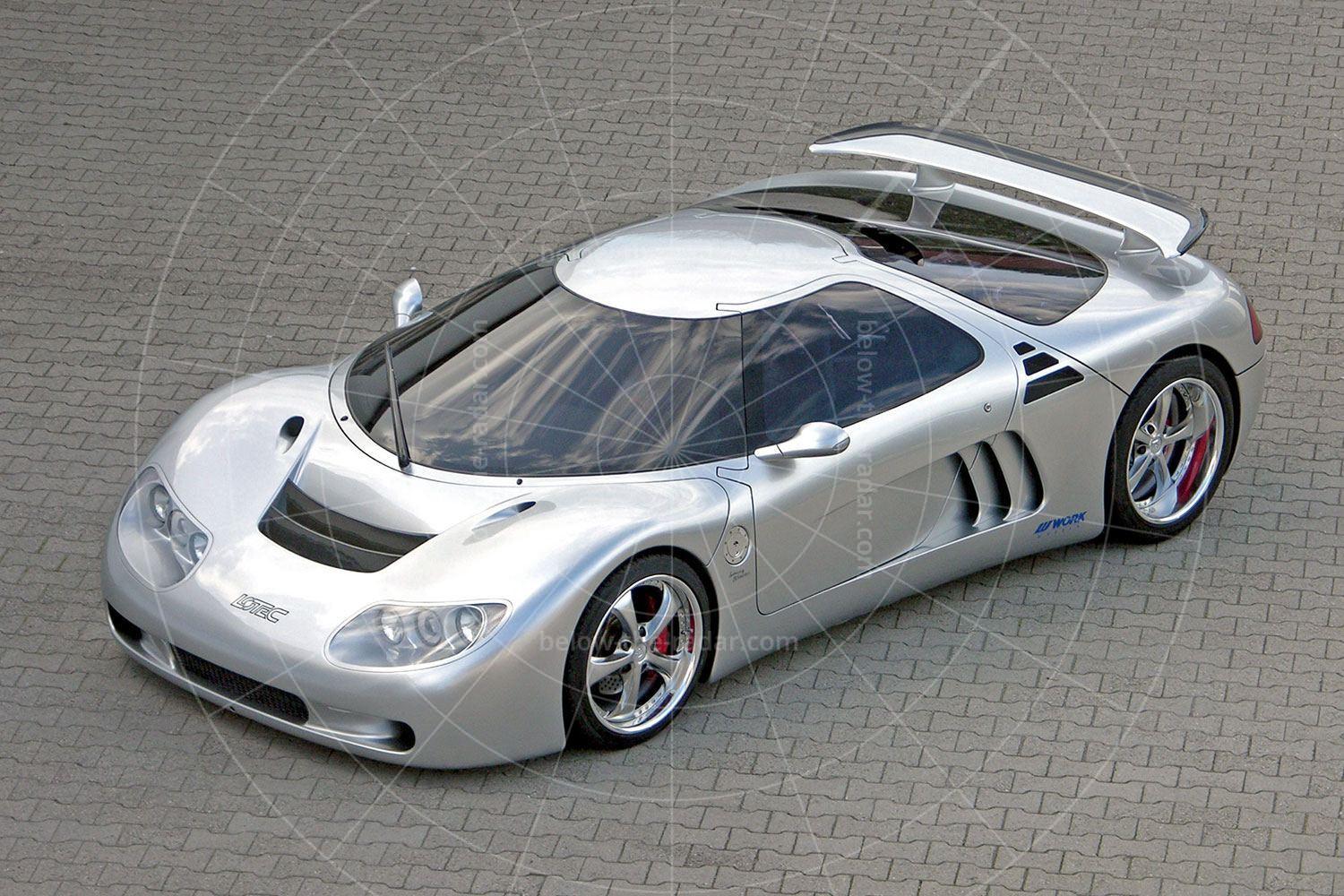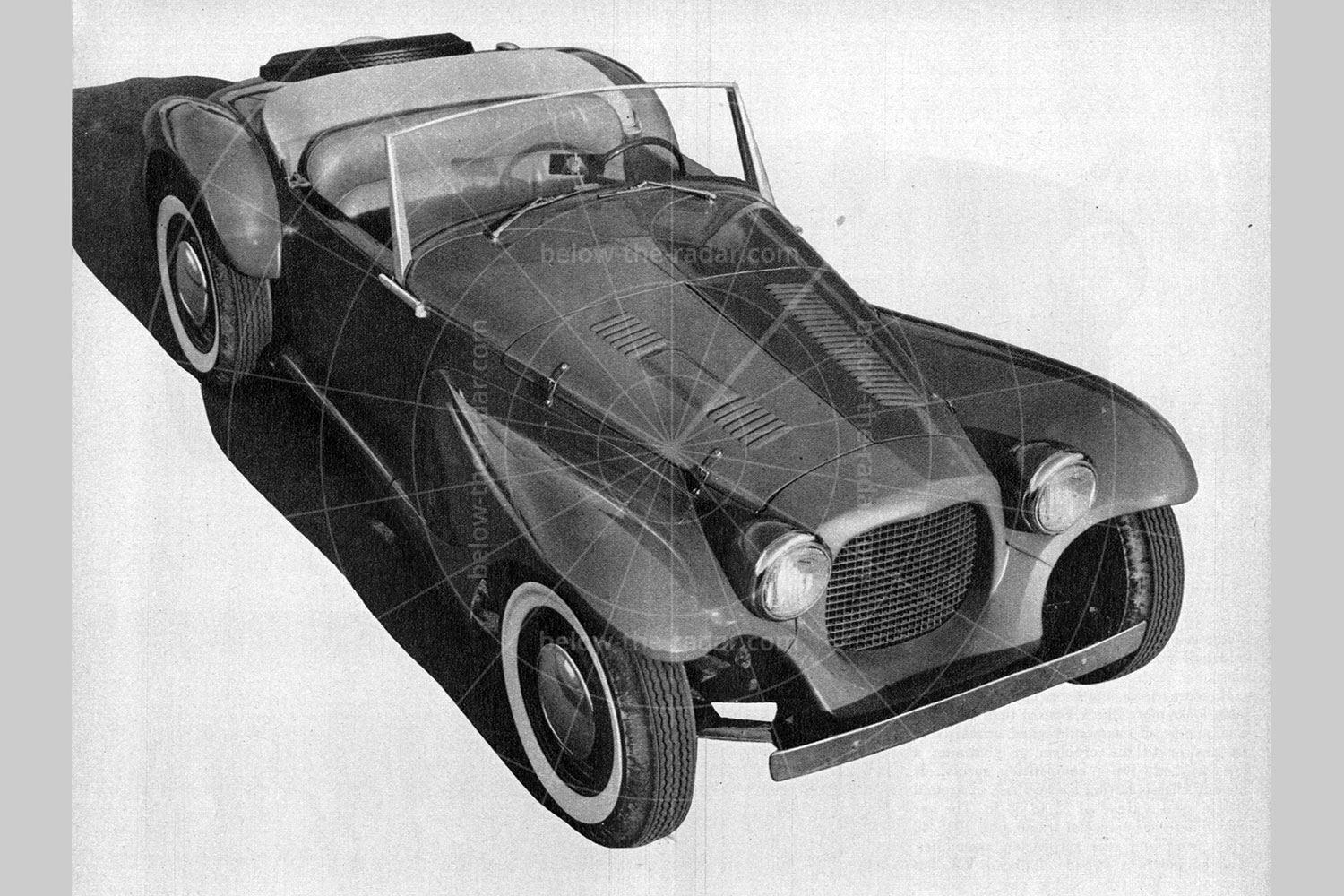The Fiftie was produced to mark half a century since the introduction of the Renault 4CV, the car of choice for the middle classes in post-war France. That’s why the concept was heavily inspired by the production car of 50 years earlier, although there were a lot of neat touches which ensured the 1996 car was rather more contemporary.
The greatest tragedy about the Renault Fiftie was that it was never put into production. Even if it had been produced in small numbers, surely it would have been popular enough for it to be built at a profit? Perhaps it could even have become the European equivalent of the retro-styled Figaro, built by Nissan on the Micra platform.
Whereas the Figaro was based on a humdrum supermini, the Fiftie’s origins were rather more inviting – underneath the 1940s-style carbonfibre bodywork was the chassis of the Renault Sport Spider. Unfortunately the Fiftie didn’t also borrow the Spider’s 150bhp 2.0-litre powerplant; instead it was used as the vehicle in which to introduce an all-new engine. This was the E-series in 1149cc form, pushing out 60bhp, and which would go on to power the Clio and Twingo. It was mated to a five-speed manual gearbox with an automatic clutch, so that although the gears were changed conventionally, there were only two pedals in the footwell.
Although the Sport Spider may have seemed like an odd choice on which to base what was essentially a completely different type of car, it made sense because of the engine position. The 4CV had been fitted with a rear-mounted powerplant, and the Sport Spider’s aluminium chassis could easily be adapted for a one-off car.
The reasoning behind the Fiftie was that it would be a leisure vehicle, for two people to escape the city. It was built for economy rather than outright performance and included as standard in the car’s equipment list was a rattan picnic hamper, stowed in the front-mounted luggage area. The use of rattan was deliberate, as it is a natural material that was contemporary yet also suggested a ‘back-to-basics’ feel. As a result, there were also rattan inserts in the interior, alongside aluminium detailing. The seats were trimmed in cotton and linen – once again giving the cabin a very natural look – while to keep it all light and airy the materials chosen were all very light in colour. The dashboard could be moved backwards and forwards, complete with steering wheel and pedals, so the seats could remain fixed; something which required far more ingenuity than might at first be appreciated.
Helping to keep the interior well lit was a sunroof made of slats which folded back to stow inside the rear window; which in turn could then be stowed away flat. This feature was also directly inspired by the 1946 4CV, which could be ordered with a soft top that allowed the whole of the passenger space to be exposed to the elements.
The outside of the Fiftie also used aluminium trim to break up the expanses of yellow, although the mass of curves and the car’s relatively diminutive proportions meant it could hardly be called slab-sided. There was no grille at the front because of the engine’s location, but alloy strips hinted at one to ensure the car’s nose didn’t remain bland. Other aluminium detailing included the air intakes just ahead of each rear wheelarch and the slatted roof was coloured grey, to contrast with the rest of the paintwork.
The tiny apostrophe-shaped headlights looked especially neat, and were the opposite of the overlarge headlights which became popular not long after the Fiftie made its debut. At the rear the series of small lights that were scattered across the rear wings were intended to resemble kites fluttering in the wind. They may have looked a little odd, but you couldn't claim they were derivative.
| Vital statistics | |
|---|---|
| Debut | Geneva 1996 |
| Designer | Benoit Jacob |
| Engine | Mid-mounted, 1149cc, 4-cylinder |
| Transmission | 5-speed manual, rear-wheel drive |
| Power | 60bhp |


















